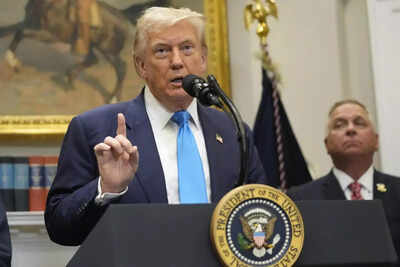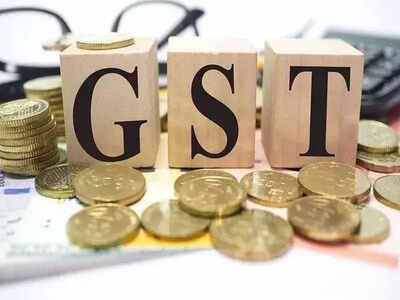Trump’s tariff hit: India among dozens to be impacted after new deadline – 10 key takeaways for the world from the fresh White House order

In another move aimed at trade enforcement, the US has unveiled a comprehensive revision of global tariff rates, targeting several countries and territories along with the European Union.The move, formalised via an executive order signed by President Donald Trump, marks a shift from negotiation-driven tariffs to a more systemic, penalty-oriented approach.The revised rates — ranging from 10 per cent to over 41 per cent — will take effect from August 7. Here are the 10 key takeaways from this significant policy shift:1. New tariffs take effect August 7The tariffs will be implemented immediately from August 7, with no grace period for compliance. This gives little to no leeway for global businesses and importers to adapt their contracts or reroute supply chains. The urgency of implementation underlines Washington’s intent to enforce trade discipline without further negotiation.2. Trump cites national security and trade imbalance as key triggersIn his executive order, President Trump said the revised tariff regime was necessary to protect US national security, correct chronic trade imbalances, and counteract trade with adversarial or sanctioned states. He also cited the need to reward “trusted economic partners” and penalise “non-cooperative” ones. The order reflects a belief that the post-Cold War global trade system no longer serves America’s strategic interests.3. Tariff rates rejig: Range now from 10% to 41%The order sets a new baseline for US trade tariffs, assigning differentiated rates across countries — from as low as 10 per cent to as high as 41 per cent. This replaces prior rate structures used primarily as leverage in trade negotiations. The new system codifies tariff levels as fixed measures, tied to country-specific assessments of economic alignment, security posture, and trade practices.4. The steepest tariffsA select group of countries faces the harshest penalties. Syria (41%), Laos (40%), Myanmar (40%), and Switzerland (39%) top the list. While political instability and alignment with US rivals are cited for some, others like Switzerland are penalised for financial opacity or trade circumvention. The 35–39 per cent tier includes Iraq, Serbia, Algeria, and Bosnia and Herzegovina — reflecting Washington’s view of high-risk or non-compliant trade partners.5. India placed in the middle rangeIndia has been imposed upon a 25 per cent tariff, making it among the high-tariffed nations, though not in the highest band. The rate was decided with US claiming unease over India’s continued trade with Russia and long-standing trade imbalances. The move also marks a setback for ongoing US-India trade negotiations.The government, meanwhile, has reiterated that it will act in its national interest. The Ministry of Commerce said it is assessing the impact of the new tariffs and penalties, while also emphasising that talks with the US for a fair and reciprocal trade agreement are ongoing. Five rounds of negotiations have taken place, with a sixth round expected later this month. India has maintained a firm stance on key issues such as agriculture and dairy, where it has resisted US demands for greater market access.6. 15% and 10% tiers cover bulk of countriesThe most common rate under the order is 15 per cent, applied to over 50 countries, including Japan, Israel, South Korea, most of Africa, and many Pacific nations. Brazil, the UK, and the Falkland Islands are among the few that face only a 10 per cent tariff — a signal of either minimal trade conflict or deeper strategic ties with Washington.7. Europe faces split treatment under nuanced formulaThe European Union is not spared — but its treatment is more complex. For EU goods that already attract US tariffs above 15 per cent, the new rate is 0 per cent (no additional levy). For other goods, a new effective rate of 15 per cent minus the existing US duty will apply. This selective formula avoids blanket punishment, while still applying pressure in key sectors.8. Unlisted nations also face 10% default dutyEven countries not explicitly named in the 95-territory list will not be spared. The order includes a default tariff of 10 per cent for all other jurisdictions. This ensures no loopholes remain in the revised system and underscores Washington’s attempt to universalise its enforcement model. It also suggests further expansions or tightening could follow in future rounds.9. Many deals still in limboEven as the August 7 deadline looms, many countries are yet to finalise trade agreements with the US. The Trump administration has struck partial or provisional deals with a handful of partners — including the EU, UK, Japan, South Korea, and Pakistan — but most lack clear terms or timelines.India, too, remains without a formal agreement, despite ongoing talks and rising strategic importance.Meanwhile, China and Mexico have received temporary extensions to continue negotiations. For dozens of others, particularly smaller economies, Washington has made little outreach, citing limited bandwidth. With the clock ticking, many nations now face steep tariffs — and deep uncertainty.10. Global supply chains likely to be reshapedWith such widespread changes, industries from pharma to electronics and steel to textiles could see cost pressures rise sharply. Trade partners will be forced to reassess export strategies, diversify markets, or engage in countermeasures. Analysts say the move could spark a new phase of tariff wars, while also opening up opportunities for domestic producers in the US.





